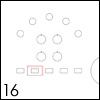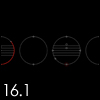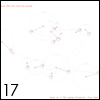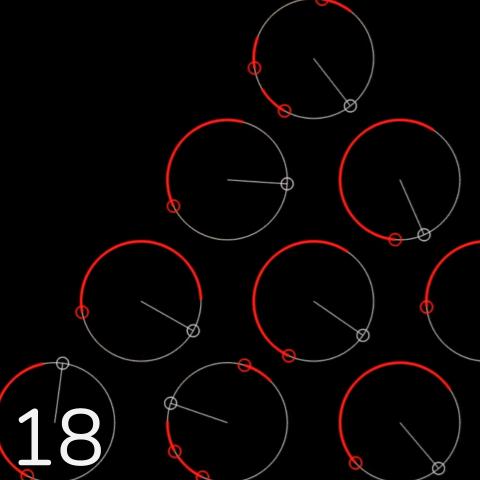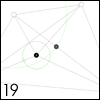The score for Study no. 15c uses the animated notation approach called convergence to indicate the onset of events with a high degree of specificity.
Performance Instructions
For any instrument (multiple iterations of Study no. 15c can be played simultaneously by multiple players, ideally with different versions of the score)
The performer(s) first determines what is meant by location on the x and y-axis. This may pitch and amplitude, for example (but feel free to get creative). Once this is determined, some sound that would be associated with a particular location within the grid, should be played when a white circle converges on a smaller white circle.
At times a faint orange line will appear. This should represent some sound that, while related to the main sound palette, is to some degree distinct. This should be played for the duration the orange line is on the screen.
At other times a larger circle will appear, and a smaller circle will rotate around it counterclockwise. This represents a sustained tone, and the particulars of this sound are determined by its location on the screen, as with the other events. If the circle is red, the performer should pause for the duration of the small circle's rotation.
If possible, the animated score should be projected for both the performers and audience to see. If this is not possible, one or more monitors can be used.
Ryan Ross Smith, 2013
If you would like a copy of this animated score for performance, or have any questions about the animated notation used in this piece, feel free to get in touch! My contact information can be found here.
